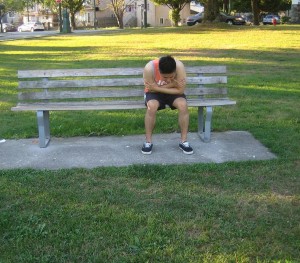A heat stroke occurs if heat exhaustion is not treated and the core body temperatures continues to increase. The onset might be abrupt and considered as a serious emergency that can progress to coma, permanent damage to the brain and even death.
Remember that the risk for death is possible if an individual has this condition.
What are the indications?
- Hot, flushed, dry skin
- Confusion
- Deep, rapid breathing
- Seizures
- Rapid heartbeat
- Lack of sweating in a warm environment

Any individual who has been exposed to high temperatures or the body temperature rises to a dangerous level can develop heat stroke.
Who are at risk?
Any individual who has been exposed to high temperatures or the body temperature rises to a dangerous level can develop heat stroke. Those who are susceptible include the elderly, usually over 65 years and young children.
Management of heat stroke
If an individual is suspected with heat stroke, call for emergency assistance right away. While waiting for the medical team to arrive, ensure that the individual is breathing.
Transfer the individual to an area with a cool environment right away. Take note that shaded area is preferable or an air-conditioned room. In case a fan is available, position it near the individual.
Remove as much clothing as possible and if ice is available, apply on areas where it is likely to cool the body rapidly such as the groin, armpits and back part of the neck.
An individual suffering from heat stroke might not be fully conscious. In such cases, it is not advisable to provide something to drink due to the possibility of choking. If the individual can sip on water, encourage to do so but do not provide anything warm or those that contain caffeine or sugar.
Quick Note / Disclaimer
The material posted on this page on heat stroke is for learning and educational purposes only. To learn to recognize the signs and how it is managed, register for a first aid and CPR course with Saskatoon First Aid.

